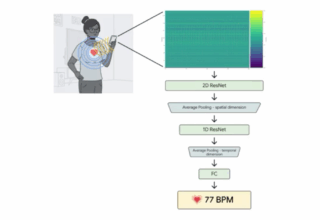Since the launch of the Affordable Care Act (also known as Obamacare), the U.S. has embarked on a major program to modernize its health system with three objectives:
- Enhance the patient experience.
- Improve U.S. overall health.
- Reduce patient and state healthcare costs.
With the advent of technologies such as system miniaturization (MEMs), sensor multiplication, wireless connectivity, augmented reality, 3D printing and data management, many possibilities are no longer unimaginable as they were ten years ago. All this has fostered a new era of Digital Health.
1. Technology Convergence & Health Management
The Quantified Self movement continues to develop thanks to Wearables ‘ contribution, but also through the multiplication of data directly influencing individual behavior. Nowadays, the Fitbit (recently passed Public with a valuation over $6.5B!), Misfit, Pebble or Apple iWatch enabled their users to be aware of their potential for being proactive for their own well-being and health. However, while this type of wearables seems especially promising, it still needs to clarify its position in the health ecosystem for definite integration.
In this HWB area, new device types seem focused on “mental well-being” via companies like Spire & Thync. One is based on breathing, the other on brain waves. They even promise to reduce stress and boost carrier concentration. Emotive or Muse, also based on brainwaves (EEG), offer interesting applications and/or games through a headset to improve concentration and lower stress. This niche of productivity and concentration of the brain seems particularly promising but still needs to prove itself over time, fighting to optimize technology to go beyond our condition.
2. Healthcare & 3D printing
Historically, a condition like deafness, abuse effects symptoms, blindness or paralysis gave little hope for improvement. Today, many technologies, unfortunately without going to total cure, offer their carriers the means to improve their conditions. 3D printing revolutionizes the prosthetics market. These techniques and materials (up to human tissues) are improving daytime and are a unique, affordable opportunity to change many people’s lives. Thanks to open-source actions such as Open Bionics, a hand-prosthesis can now be printed in 3D in just 42 hours and at a price of $3,000 (30x cheaper than previously used). Many scientists and practitioners expressed enthusiasm for these techniques at the recent Inside 3D Conference. One of them caught my attention: validated by the FDA, Aprecia goes as far as 3D printing drugs. This major innovation, based on an MIT printing platform, could disrupt the current pharmaceutical industry.

3. Monitor Health Anywhere, Anytime
Every minute counts for a doctor. But a new device wave now presents a real opportunity to improve productivity. From faster basic controls (vital signs) to identifying complex pathologies, it promises profound change for all. With this in mind, Stetho created the connected stethoscope so information can be traced to a smartphone more accurately and quickly. Mouthlab (John Hopkins University technology), by measuring breath and electrodes, captures vital signs. Large companies also act as engines through competitions and/or dedicated accelerators to create tomorrow’s medicine.
4. 3D Representation of Cell Tumor by Color Scheme
EchoPixel also allows transforming DICOM data (coming from MRI, X-Ray scanner, or ultrasound) into a virtual reality course on this aspect of visualization! Adaptable to all VR glass technology, it allows the practitioner to visualize and then immerse sensitive operating areas (including the heart). In the operating room, Augmented Reality appears to add details about the operations to follow. The unadapted Google Glass could find a second life in the operating rooms.
TéléMedecine, long known as a revolution, has struggled for 10 years to impose itself inpatient rehabilitation. The arrival of Wearables, Smartphones, and all connected enable the establishment of a new patient-doctor relationship where telemedicine could be adopted. Take advantage of the above-mentioned real-time diagnostic technologies, add technologies such as WalkJoy that allow you to detect (and alert) remote falls, and Teledoc (announced as the next Unicorn start-up) to dialog with your doctor via your smartphone, and get remote control of a post-operative abuse effects symptoms patient. Another interesting company, AdhereTech created a connected medicine box to control patients’ good drug intake.
Medical Industry Evolution, the Strength of Sharing Data
In all the applications and technologies mentioned, constant returns: data processing… Lots of data. The next critical step in enabling significant patient and healthcare adoption is the interoperability of all these data flows. It started with modernizing the American health system and implementing Electronic Medical Records (EMR) and Electronic Health Records (EHR), which can be linked to our electronic patient records (via our Health Card). Major American companies like Google (GoogleFit), Apple (Healtkit) or Valicicam have returned to this race to provide platforms that continue to collect and analyze patient data through new technologies.


















